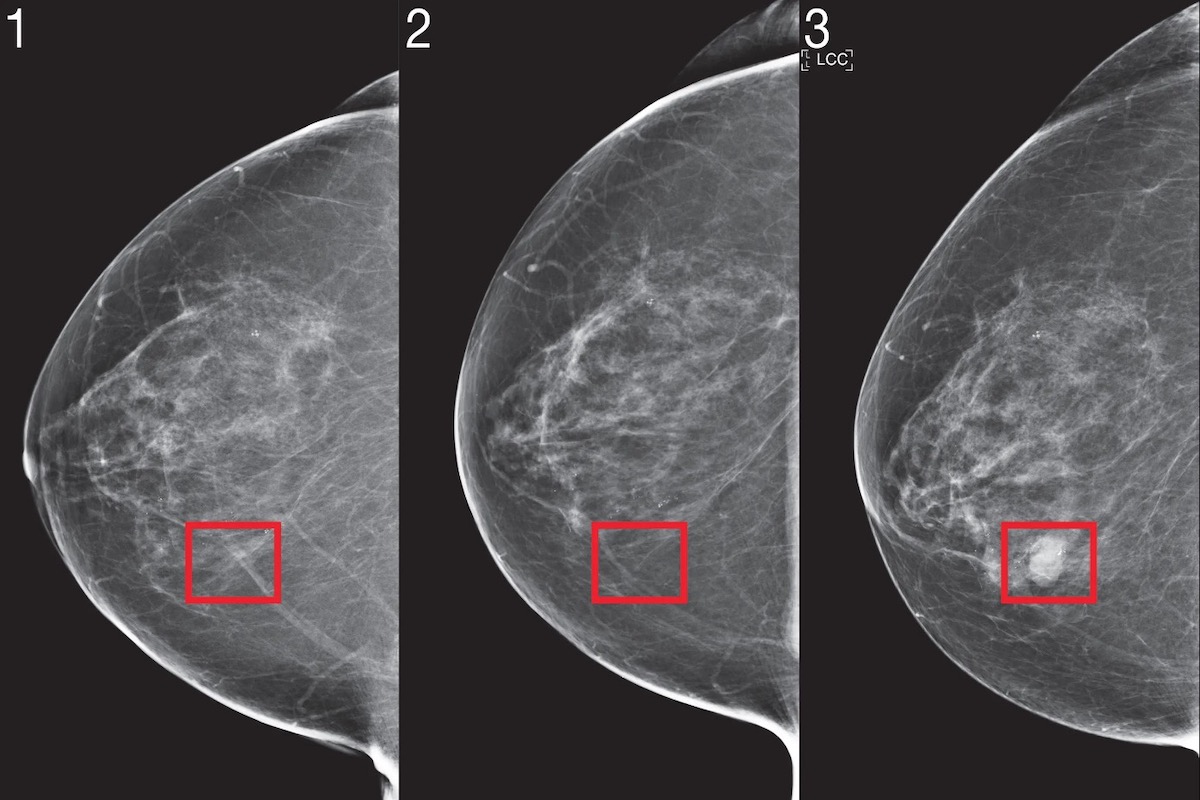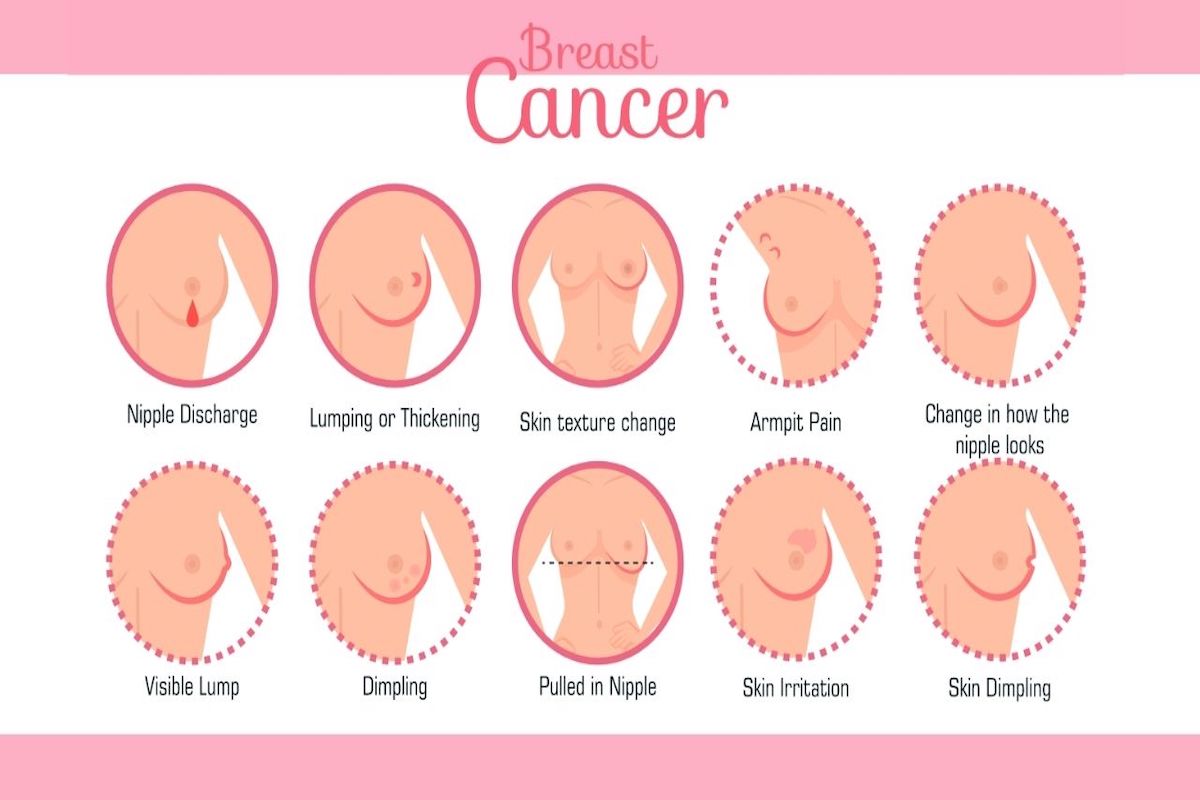Breast cancer is a common health issue in the United States, impacting both women and men. It is the most frequently diagnosed cancer in women, with approximately 1 in 8 women developing it in their lifetime. While less common, around 1% of breast cancer cases occur in men. This condition involves the abnormal growth of cells in the breast tissue. Knowing as much as possible about breast cancer is vital, because the sooner it’s recognized early and treated effectively, the more chances someone has of getting better.

Causes of Breast Cancer
The causes of breast cancer are not fully understood, but some things can increase the risk. One of the main factors is being a woman. Age is also important because the risk increases as you get older. Family history and specific gene mutations can play a role too. Other factors like hormonal changes, obesity, alcohol consumption, and exposure to radiation or certain chemicals may also contribute. Cancer is a complex disease, and having these risk factors doesn’t mean you will get breast cancer.
Are There Different Types?
There are several types of breast cancer. Understanding them – and their differences – is essential for diagnosis and treatment. Each has its characteristics, from common types like invasive ductal carcinoma to rare ones like Paget’s disease or phyllodes tumors. By familiarizing ourselves with these types, we can better navigate the complexities of breast cancer and make informed decisions regarding our health. All this information can be overwhelming, so to make it more clear, we’ve put it in this overview:
Overview of each Type, Its Prevalence & Aggressiveness
| Type of Breast Cancer | Description | Prevalence (%) | Aggressiveness |
|---|---|---|---|
| Invasive Ductal Carcinoma | Starts in milk ducts, can spread to other parts of the breast | 80% | Moderately Aggressive |
| Ductal Carcinoma in Situ (DCIS) | Non-invasive cancer confined to the milk ducts | 20% | Non-Aggressive |
| Invasive Lobular Carcinoma | Begins in milk-producing glands, can also spread | 10-15% | Moderately Aggressive |
| Triple-Negative Breast Cancer | Specific subtype lacking estrogen (ER) & progesterone receptor (PR), and HER2 expression | 10-15% | Aggressive |
| Inflammatory Breast Cancer | Rare and aggressive cancer causing redness, swelling, and warmth | 1-5% | Highly Aggressive |
| Lobular Carcinoma in Situ (LCIS) | Non-invasive cancer in the milk-producing glands | 1-3% | Non-Aggressive |
| Paget's Disease of the Breast | Rare cancer affecting the nipple and areola | < 5% | Variable Aggressiveness |
| Phyllodes Tumors | Rare tumors in the connective tissue of the breast | < 1% | Variable Aggressiveness |
Please note that the prevalence percentages and the aggressiveness provided are approximate and can vary. It is important to consult with healthcare professionals to determine the specific characteristics of an individual’s breast cancer.
Undiagnosed or untreated breast cancer can lead to various complications, which can range from non-serious to life-threatening. Non-serious complications may include persistent pain, breast lumps or changes, and discomfort. As the cancer progresses, more serious complications can arise. These may include the spread of cancer to nearby tissues or lymph nodes, causing swelling, infections, and skin changes. If left untreated for a long time, breast cancer can spread to other organs like the bones, liver, or lungs, leading to life-threatening complications. These can include severe pain, organ failure, difficulty breathing, and a decreased ability to perform daily activities. This is why, it’s important to know and remember how you can recognize this type of cancer.

Symptoms of Breast Cancer
Breast cancer can have different symptoms. One of the earliest signs is a lump or thickening in the breast or armpit. It can feel like a hard or firm mass within the breast tissue or under the armpit. It’s important to note that not all lumps are cancerous, and they can be caused by various factors like cysts or benign tumors.
Changes in the size or shape of the breast are also a common symptom. As breast cancer may cause the affected breast to change in size or shape. This can include swelling, enlargement, or shrinkage of the breast. One breast may become noticeably larger or smaller than the other. Additionally, there may be changes in the contour or symmetry of the breasts. Other symptoms include:
- Nipple changes: Such as nipple discharge or scaling.
- Breast or nipple pain: Unexplained pain in the breast or nipple area.
- Swelling: Swelling or redness on all or part of the breast.
- Skin changes: Dimpling, puckering, or resembling an orange peel texture.
- Skin changes: Itching, rash, or color changes.
- Nipple retraction: The nipple pulling inward or becoming inverted.
- Enlarged lymph nodes: Swollen lymph nodes under the arm or around the collarbone.
Stages of Breast Cancer
Cancer staging can be difficult to understand or explain. To make it more clear we’ve created an overview of the different stages of breast cancer, along with their common symptoms. Why is this important to know? Well, understanding the stages can help in determining the extent of cancer and planning appropriate treatment
Overview & Common Symptoms of each Stage
| Stage | Description | Common Symptoms |
|---|---|---|
| Stage 0 | Also known as ductal carcinoma in situ (DCIS), non-invasive cancer | No symptoms; detected through mammograms |
| Stage I | Early-stage cancer, localized to the breast | Small lump, breast pain, nipple changes |
| Stage II | Cancer that may have spread to nearby lymph nodes | Breast lump, nipple discharge, skin changes |
| Stage III | Locally advanced cancer, spread to nearby lymph nodes and tissues | Breast swelling, skin ulcers, dimpling |
| Stage IV | Advanced or metastatic cancer, spread to distant organs (e.g., lungs) | Bone pain, shortness of breath, fatigue |
Please note that these symptoms are general and can vary for each individual. It’s important to consult with a healthcare professional for a proper diagnosis and evaluation if you experience any concerning symptoms or changes in your breasts.
We can not say this enough: early detection and timely treatment significantly impact the prognosis of breast cancer! The big questions are: how is it diagnosed and treated? And what are my chances of beating this type of cancer? Well, let’s start with explain how professional healthcare providers diagnose breast cancer. Doctors use different methods to diagnose breast cancer.

First, they examine the breasts physically to feel for lumps or changes. Then, they may do tests like mammograms, ultrasounds, or MRIs to get pictures of the breast. If something suspicious is found, a small piece of tissue called a biopsy, is taken and checked under a microscope for cancer cells. Additional tests like blood tests or scans may be done to see if the cancer has spread. If you notice any changes in your breasts, it’s important to see a doctor for a check-up.
Are There Any Treatment Options?
Fortunately, there are several treatment options available for breast cancer. The treatment plan depends on factors like the stage of cancer, the type of breast cancer, and individual health. Some common treatment options, include:
- Surgery: The most common surgical options include lumpectomy (removing the tumor and a small portion of surrounding tissue) or mastectomy (removing the entire breast). Lymph node removal may also be done to check for cancer spread.
- Radiation therapy: High-energy rays are used to kill cancer cells. It is often recommended after surgery to destroy any remaining cancer cells in the breast or lymph nodes.
- Chemotherapy: Powerful drugs are given to destroy cancer cells. It may be used before surgery (neoadjuvant), after surgery (adjuvant), or for advanced stages of breast cancer.
- Hormone therapy: For hormone receptor-positive breast cancers, medications are used to block hormones or reduce their effects on cancer cells.
- Targeted therapy: Drugs are used to target specific characteristics of cancer cells and disrupt their growth.
- Immunotherapy: This treatment activates the immune system to recognize and destroy cancer cells.
There are many ways to treat cancer these days, the ones mentioned in this article are just a few examples. Sometimes they are combined, but it can also happen that these treatments do not help (anymore), so other options should be considered. That’s why it’s essential to do your own extensive online research and stay up to date about new treatments. Have you already been diagnosed with breast cancer, but aren’t satisfied with your treatment plan? Doing a second opinion in another hospital or oncology center is always good. Start your search today:

